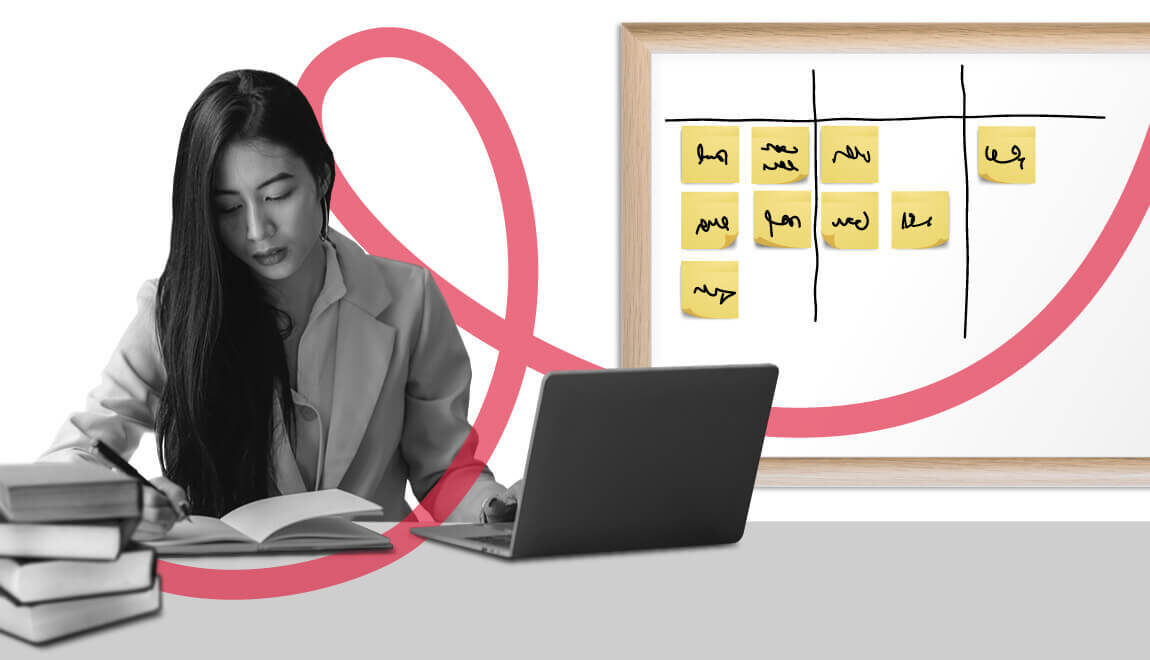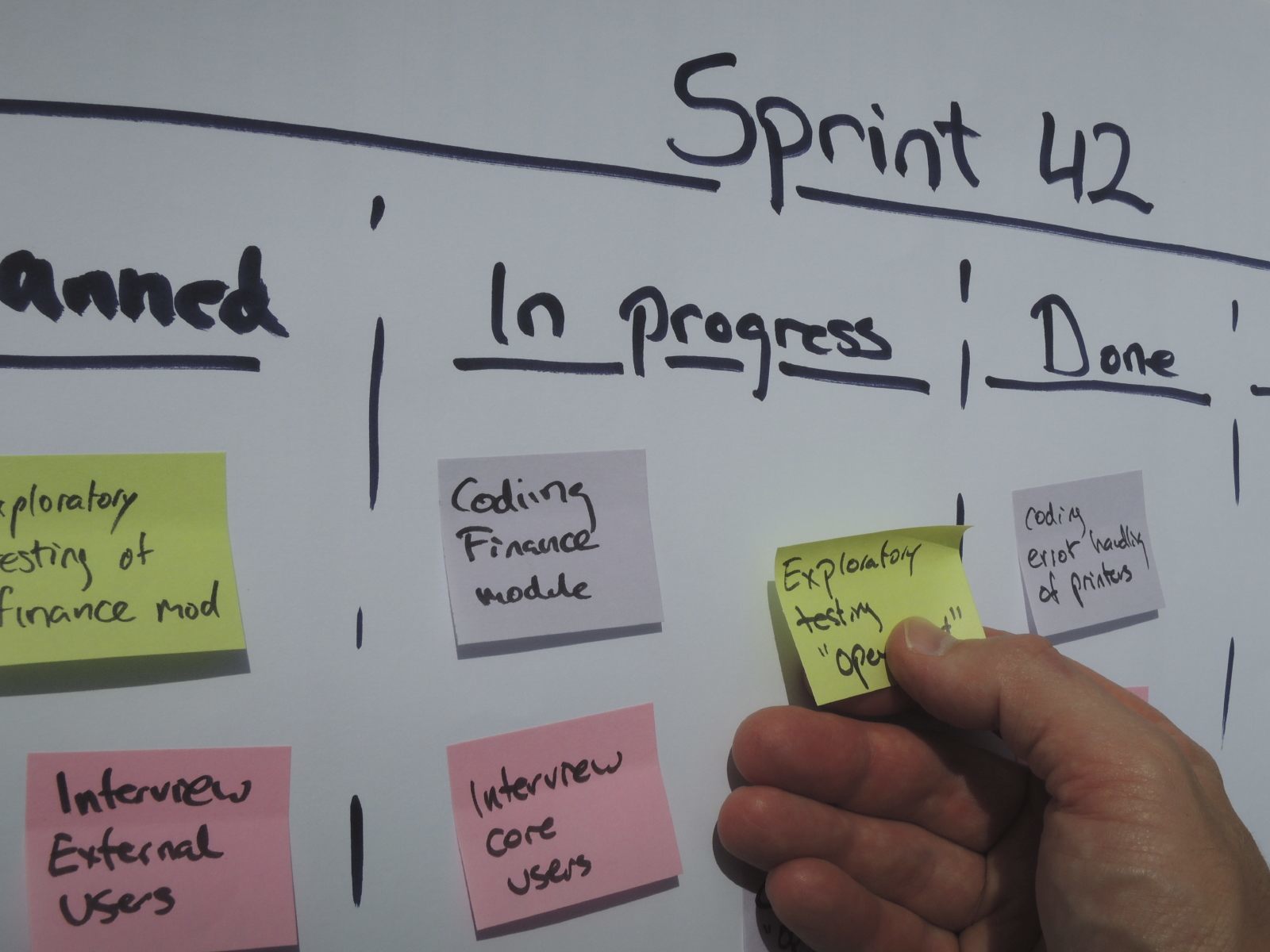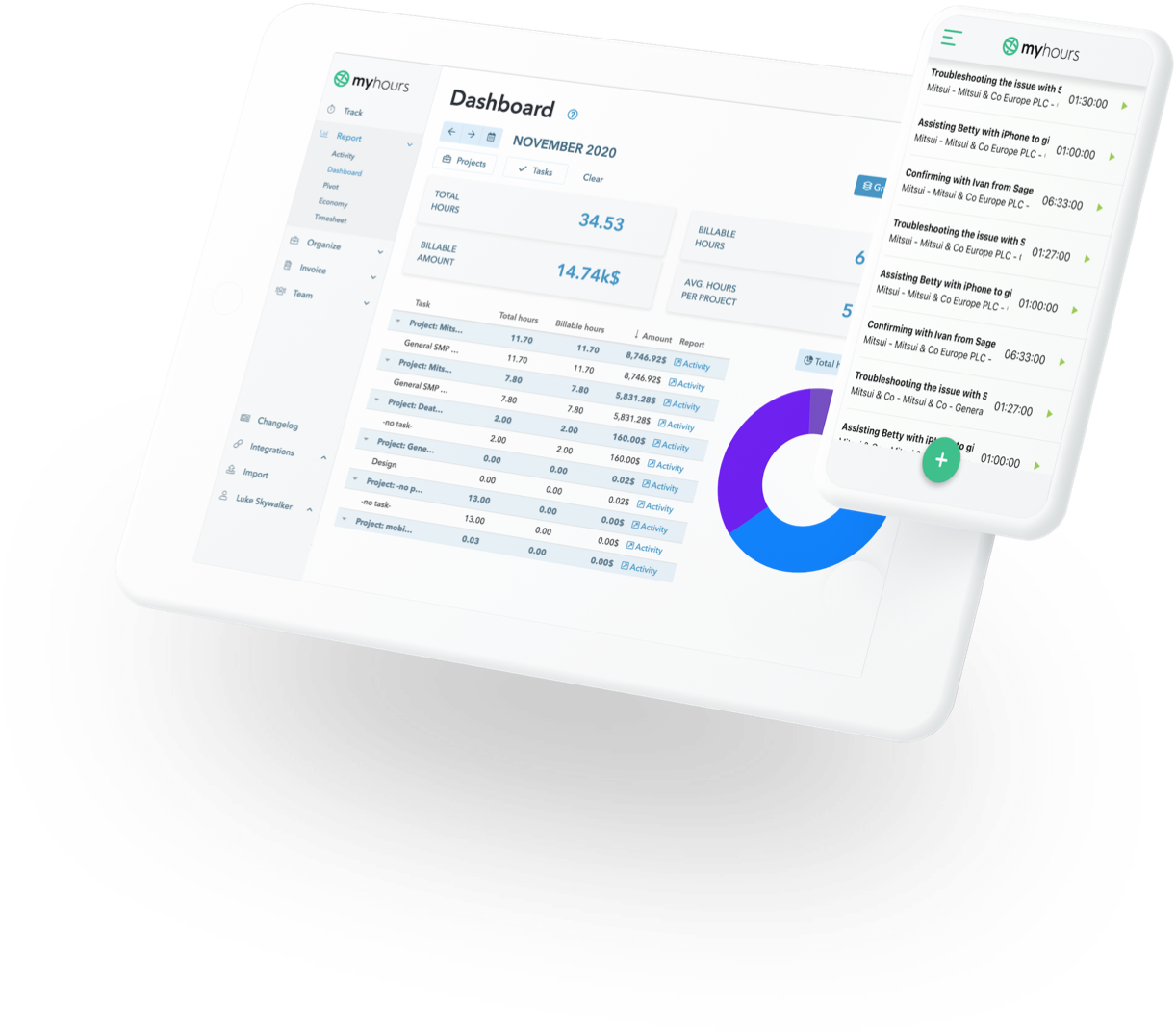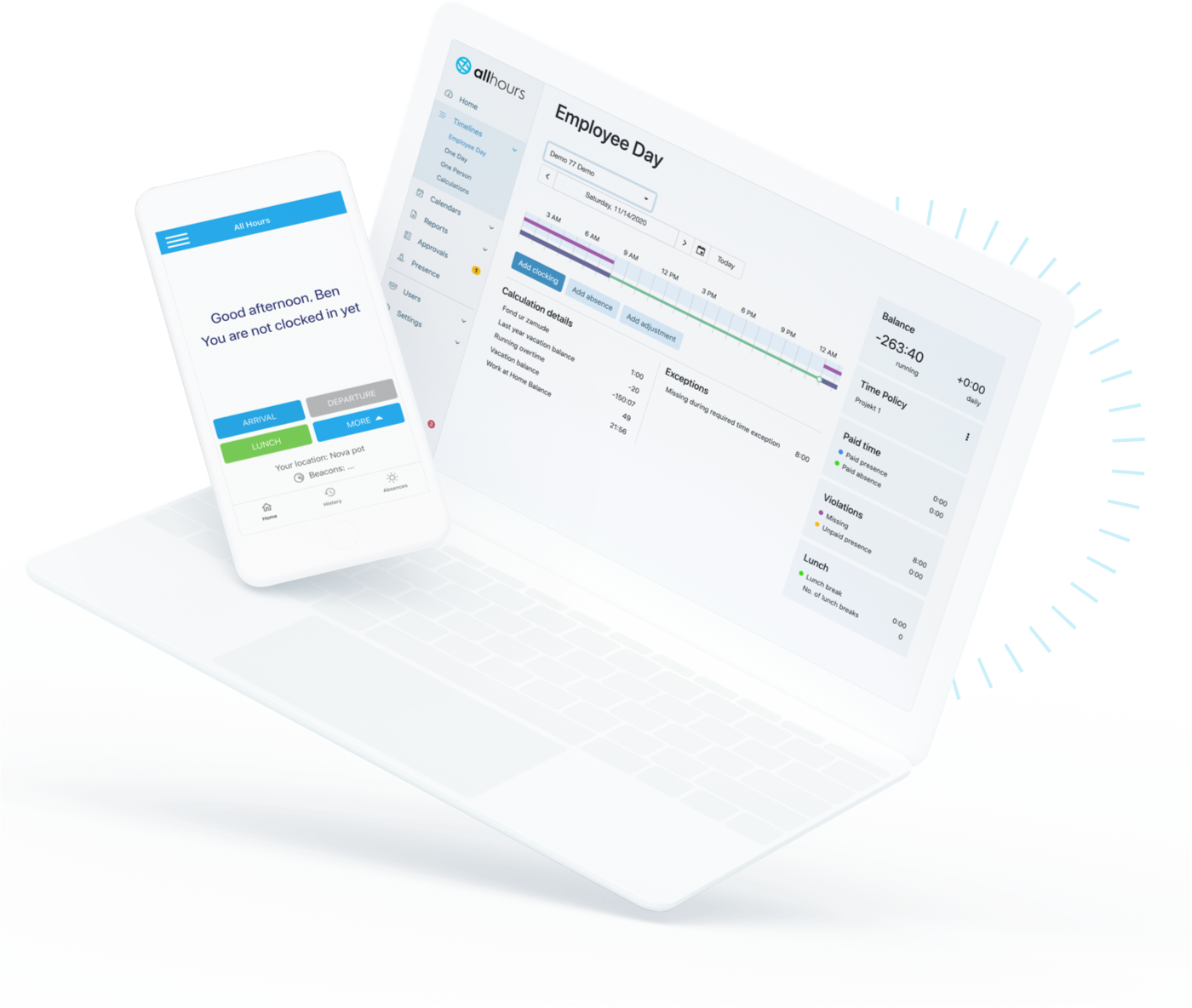Kanban Board – The number one productivity tool for visualizing tasks

Kanban is a Japanese word meaning billboard or signboard. It’s an integral part of the Toyota Production System (TPS), with the main goal of supporting just-in-time production (JIT).
Kanban is beneficial to lean manufacturing, because it helps avoid overloading the manufacturing system and producing too much inventory, which is one of the seven wastes in lean production theory.
In this article we will cover everything you need to know about the Kanban board and how to use it to increase your productivity and the productivity of your team.
- The origins of Kanban board
- The psychology behind the Kanban board – We can process visual information much faster than words
- The main idea of Kanban – better communication by visualization
- Kanban board and Kanban cards – simple instructions on how to put Kanban into practice
- Physical board or software solution?
- SCRUM or Kanban – which agile management approach is better?
- The Kanban board – suitable for individuals and teams of any size
The origins of Kanban board
The inspiration for the Kanban system was retail stores or, more exactly, store clerks in supermarkets who restocked the shelves every time that an item was sold to the customer.
The inventory was not restocked directly by the vendors on their own estimates, but when an item was nearly sold out, the clerks were allowed to order new supplies. The restocking of the inventory was therefore completely demand driven.
The key components of the Kanban system are Kanban cards. To put it very simply: in lean production, the Kanban cards show that an item was sold and start a new task in the production process. The inventory needs to be restocked and a new product needs to be produced.
The whole production process is supported by the Kanban card visualization. In this way, the Kanban system encourages a demand-driven system, JIT production, and constant improvement, especially in eliminating waste.
Nowadays in business, either electronic Kanban systems are being used (eKanban) or the Kanban system is integrated directly into ERP (enterprise resource planning) platforms.
The use of the Kanban system in manufacturing was the inspiration for using the same system in agile software development, with the main goal of delivering the software just in time and not overloading the team members.
Kanban in software development is all about process management visualization that tells what, when, and how much to develop.
The psychology behind the Kanban board – We can process visual information much faster than words
We people are visual beings. Our brain can capture more information from a single picture than from dozens of pages of text; in addition, we can process pictures much faster than words.
Neurons devoted to our visual perception account for 30 % of the brain’s grey matter, compared to only 8 % for hearing and 3 % for touch.
In reality, our brains find it quite complicated to read a text. They first must decode it letter by letter, matching them to the shapes stored in our memory; then, in the second step, the brain must process how all the letters fit together to form a word.
Afterwards, the brain must connect words into sentences and sentences into paragraphs. Reading a text is a long and complicated process for us.
However, when we look at pictures, our brain can process several pieces of information simultaneously, which means it is processing the information given around 60,000 times faster than when reading a text.
Visual information (pictures, graphics, drawings, infographics…) is therefore a big relief for our brain in today’s world of information overload. The reason behind much faster picture processing is probably pretty simple – threats in the prehistoric world were visual things, not bunches of text.
It’s also easier for our brain to process text information if there are pictures added. Graphic elements included in the text increase our comprehension, recollection, and retention since they help our brain decode the text.
Pictures also add more intense emotional processing, which engages our imagination and creative thinking.
The main idea of Kanban – better communication by visualization
The fact that we are visual beings is what the main idea of Kanban is built upon. The main principle of the Kanban system is thus better communication by visualization and visual management.
The four key principles of Kanban are:
- Visualize work: Make work visible for better management as well as to identify queues and bottlenecks (or personal procrastination on specific tasks).
- Limit Work in Progress (WIP): Increase focus and set priorities, manage overload. With the right amount of work in progress, the team can be in the flow instead of facing anxiety or boredom.
- Focus on the Flow: Analyze the workflow to increase productivity and constantly try to improve the smoothness of the flow.
- Continuous Improvement: Continuously improve the effectiveness of the team with focus on the flow and improving your system. The continuous improvement principle in the Toyota Production System is called Kaizen.

Kanban board and Kanban cards – simple instructions on how to put Kanban into practice
Sound interesting? In order to use Kanban, you only need:
- A blackboard or a white board
- Sticky notes (different colors of them)
- and that’s it!
A Kanban board: Usually it’s a big, white, magnetic, dry-wipe board. You can use any other surface on which you are prepared to draw and stick some notes, but it’s good to have a big board so you have enough room. You should draw several columns on the whiteboard, visualizing the stage a specific task is in.
In software development the columns are usually:
- To Do
- Plan
- Develop
- Test
- Deploy
- Done
The simpler version uses only three columns:
- To Do
- In process
- Done
You can also add other columns like “Backlog”, “Stuck”, “In Review” etc., and these columns should be adjusted to your workflow and needs.
Sticky notes: Every sticky note represents a task that a team or individual has to perform. You simply write what must be done on the sticky note (name of a task).
Sticky notes can be of different colors for different types of tasks (User story, feature, defect …). On every note, you can also write additional data, like the estimated scope of the task in hours, a unique task ID, task owners and other information.
After you have the board and sticky notes, you simply stick them in one of the columns, depending on the phase the task is in. Now you have a nice visual representation of what needs to be done, the work in progress and tasks that are being completed.
The main reasons for using Kanban as a task management system are:
- It’s more fun than just having a list of tasks with text only
- You have a nice visual overview of things that need to be done
- You can set the priorities and focus yourself more easily
- You can very quickly see the tasks you are procrastinating on
- It’s easier to enforce workflow in everyday life. You move a sticky note with a task to the column marked “In process”, put some music on and start working.
- You can manage anxiety better if you limit the amount of work in process
It’s such a simple and efficient tool. On a very complex projects you can employ several boards or swim lanes, where you simultaneously visualize several different sub-projects your team is working on.
Physical board or software solution?
One of the most frequent questions is whether you should use the physical board or a dedicated software solution. The best way to use Kanban is definitely to have a physical board.
Real boards are much better, especially since you can’t just not notice a big board with sticky notes in different colors. They are also much more fun.
But often that is not possible or practical, either because the team is geographically distributed, or since working from home is becoming more and more popular. Thus, you can easily go for an online software solution.
There are many different solutions on the market, such as:
Practically every software development tool, especially the ones that support SCRUM agile management (i.e. Jira, YouTrack,…) has a Kanban board function.
SCRUM or Kanban – which agile management approach is better?
SCRUM and Kanban are the most popular agile management frameworks, primarily in software development. Consequently, a frequent question is whether you should use the SCRUM or Kanban method to successfully manage your projects.
The answer depends on how complex your project is and how big of a team you manage.
Kanban is a very simple method which aims to visualize your work for better management. Its goal is to help you identify bottlenecks, limit work in progress, and provide continuous flow and delivery on your project.
There are no required roles or any other rules, except to use the Kanban board as described.
SCRUM on the other hand is a much more comprehensive and complex tool.
SCRUM helps you to dissect work into small and manageable pieces called user stories, which can be done by a self-organizing and cross-functional team within a prescribed time frame (7 or 14 days).
The prescribed time frame is called a sprint and provides a productive dynamic for a team. SCRUM gives a lot of emphasis on relationships in teams, creating a valuable outcome, collaboration with all stakeholders, responding to change, and constantly improving the way you do work.
It also provides a clear set of tools for implementing the framework.
The roles in SCRUM team are:
- Product owner – Manages priorities, talks to all stakeholders, takes care of products
- SCRUM master – Facilitates the SCRUM framework, removes obstacles
- The team – Cross-factual, fully committed team
The workflow is based on:
- Sprint Planning – Defining the scope of work for the next 2 – 4 weeks
- Daily Scrum – Short 15‑minute daily meetings to keep commitment among peers
- Sprint Review – Review of the work completed after the sprint
- Sprint Retrospective – A discussion of what went well and what could be improved
And the artifacts of SCRUM are:
- Product Backlog – A list of everything that will be delivered
- Sprint Backlog – A list of tasks that will be delivered in the next sprint
- User Stories – Small, independent, valuable, estimable, testable delivery features
- Burn-down Chart (Total effort, Velocity) – Progress plan based on the actual capability of the team
Go for Kanban if you:
- are working on a simple project
- are looking for a very simple solution
- prefer a solution that you can immediately implement
- are looking for a tool to help you manage workflow better
- are a very visual person
- are managing a very small team (2 – 3 people)
Go for a SCRUM if you are:
- looking for a powerful and comprehensive project management solution
- working on a complex project
- trying to provide more structure and better communication in your team
- trying to improve velocity of your team
- very diligent and consistent in using more complex management tools
- managing an average size team (4 – 10 people)
The Kanban board – suitable for individuals and teams of any size
The biggest added value of the Kanban system is definitely for teams with complex projects, and for businesses with a complicated supply chain and sales channels.
But it can also be used for small teams, as well as to increase personal productivity.
With Kanban you can easily:
- Improve your productivity
- Identify bottlenecks
- Promote focus
- Manage and set priorities better
- Synchronize your team based on workflow visualization
The best thing is that you can adjust the Kanban system to your own needs. You can add new columns, use additional sticky note colors, invite team members, coworkers, and other stakeholders to use your Kanban boards and so on.
The system is really fun and really improves productivity by helping you visualize your workflow. Work smart, visualize-your work.









